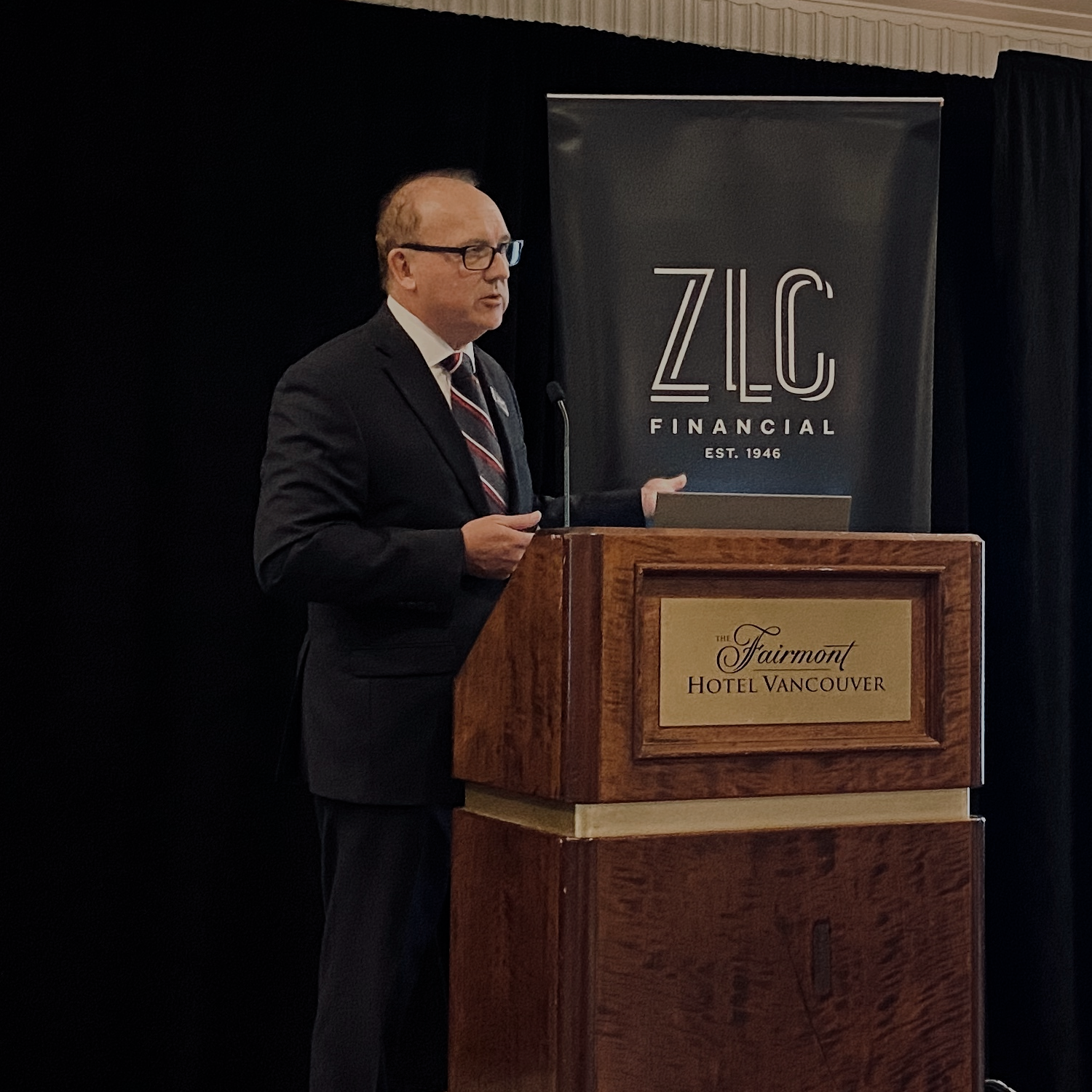We recently held our Benefits Today: Trends, Topics & Myths Debunked half-day professional development seminar at the Fairmont Hotel Vancouver. This was the third year with another fantastic line up over speakers, covering topics such as employee benefits plan inflation, trends in leadership development, virtual healthcare and employee communication. We spoke about perceptions that employees and employers have about their benefit plans, and how those align as well along with a lively debate around misconceived perceptions on traditional plans vs. spending accounts.
We were happy to see another highly attended session of HR professionals, finance personnel and key decision makers, along with top industry leaders for a morning of insightful learning, exploring practical solutions and strategies for businesses and gaining a better understanding of the current realities of employee benefits through a wide spectrum of topics. The speakers did a terrific job, and we appreciate them taking the time to share their expertise and insight. Continue reading for a summary of some of our key takeaways from the day.
Special thank you to our session sponsors for their support:
Diamond: Babylon by TELUS Health
Gold: Pacific Blue Cross
Silver: Chubb, Equitable Life, Great-West Life, Green Shield, Industrial Alliance, Lifeworks by Morneau Shepell, SSQ Financial and Sun Life Financial
Bronze: Empire Life
2019 Sanofi Canada Healthcare Survey – Closing the Knowledge Gaps in Health Benefit Plans
- The Sanofi survey is a benchmark survey on plan members’ and plan sponsors’ perceptions of health benefit plans. It is an online survey conducted across Canada with over 1,500 plan members and over 400 plan sponsors.
- The analysis of survey data is guided by an advisory board representing plan sponsors, benefit providers, benefit advisors and healthcare professionals all across Canada. John McGrath is one of only two Sanofi board members based in Western Canada.
- Chronic disease is linked to business outcomes – lost productivity and absenteeism. Targeted, personalized communications help increase engagement for chronic disease management
- The status of health benefits upon retirement need to be clearly communicated
- Plan members and plan sponsors significantly underestimate the number of drugs covered by their own plan
- Telemedicine is another mechanism to reduce absences: plan members are receptive to using this technology to get initial medical opinions, including possible diagnoses and prescription
Panel Discussion: How virtual care saves you money and empowers your employees to live healthier, happier lives:
- BusinessPlus from Babylon by TELUS Health is a virtual care solution designed specifically for the workplace to provide convenient access to GPs, mental health professionals and other healthcare providers all within a single mobile app
- Their solution can help boost team productivity by giving convenient access to quality healthcare, which will in turn help you retain top talent and optimize workplace well-being
- Absenteeism can be reduced with timely support to address mental health concerns ranging from everyday stress to depression and anxiety
- Babylon by Telus Health prides themselves on being able to provide high quality of care, while helping you gain insight into the health of your team through reporting and ensuring their health data is kept safe and secure by upholding to the highest industry standards
- This solution is affordable and cost effective – you can provide all of our services to your employees at no more than a cost of a cup of coffee (per employee per month)!
Financial Update on the Employee Benefits Industry
- When asked about the biggest benefits-related issue for the coming year, 31% of attendees indicated cost inflation, the most prevalent response.
- Employee benefits continue to be a significant cost to employers and these costs continue to be under inflationary pressure, likely higher than other areas of the business, with no relief in sight.
- In prior years, we had been projecting annual cost increases of 8% to 9% but we projected a lower level of 7% in 2019. Based on survey results, 44% of attendees indicated their plan costs increased 0-5% over the past year and another 40% indicated the increase was 5-10%.
- For 2020, we are expecting to see a little bit more relief, and projecting cost increases of 6% with ongoing relief related to drug costs, both generic and biosimilar drugs. Based on survey results, 30% of attendees expect their plan costs will increase 0-5% over the next year and another 50% indicated they expect the increase will be 5-10%.
- Approximately 40% of attendees do not intend to make changes to their benefits plan in light of this inflation projection either because of the tight labour market or because they can handle the cost increase, but 35% may consider plan design changes to reduce costs.
Trends in Leadership Development
- Leadership Development is any activity that forms part of an organization’s efforts to develop its current and future leadership team.
- It involves the planning and execution of two tasks:
1) Identifying talent that has the potential to lead the organization.
2) Retaining and developing that talent to take up, and to excel in, leadership roles. - Effective Leadership Development is directly correlated to overall business success
Insurance versus Spending Accounts – What is your Corporate Philosophy
- What’s better, a tradition benefit plan structure or providing employees with a spending account? Or both? Our heated but respectful debate focused on the following areas:
o Controlling cost. Benefit plan costs have risen higher than many other organizational costs; are these cost increases sustainable? The average benefit plan costs have increased since 2015 by 6.3% annually and is expected to increase between 4% and 9% (or an average of 6%) next year. As a percentage of payroll however, the cost increases may not seem as dramatic. If an employer’s benefits cost (excluding retirement and disability cost due to casual absences and paid sick leave) is approximately 5% of payroll, the projected 6% increase represents an increase of only 0.3% of payroll.
o Organizational needs. We address the organizational needs to attract and retain employees, and using the benefits program as part of a total rewards framework.
o Employee perception. Studies show that over the years, employee perception and value of benefit plans has declined but the vast majority of employees (77%) feel entitled to health plans from their employers. Likely because benefit plans have not changed materially over the years and therefore have not kept up to workforce and employee expectation
o Benefits philosophy. Organizations need to consider creating one if a benefits philosophy does not already exist. They should evaluate priorities, obtain Executive input and buy-in. As the employee labour force landscape has changed substantially, employee benefit plans should be reviewed through that lens. - Spending Accounts, either taxable or non-taxable, are on the rise to allow employees flexibility on how they spend their allocated benefit dollars. Costs are fixed at the level established by the employer.
- Traditional plans offer simple and comparable plans that employees understand, and employers don’t have to continue to explain the features. They also include controls that have evolved over the years that limit reimbursement to what has been determined as reasonable and customary.
- Audience polling showed an overwhelmingly clear preference to a combination of traditional plan features with a spending account, with 81% indicating their preference of this option over others, such as a straightforward traditional plan, a flex or modular flex plan, or a basic spending account.
ReDefined Contribution Plans
- This presentation is part of the largest study of financial language in the world. The main focus of the study is “It’s not what you say it’s what they hear”
- We speak in financial language and jargon and most Canadians don’t understand that language. Plus many are uncomfortable telling us they don’t understand our language.
- We need to follow 4 communication principles when we talk to members, participants and investors:
1) Be Positive
2) Be Plausible
3) Use Plain Language
4) Use Personal Language
But there is still work to be done. What was clear from all of our speakers is the need to develop an internal strategy. For example, do you want to be ahead of the curve when it comes to virtual healthcare, or do you have more of a wait and see approach? What about changing the structure of your benefits plan from traditional to more flexible, or the other way around? How do you want to better communicate your benefits or retirement plan? Do you have the tools in place for your leadership team to make this happen? What is your strategy to cope with the overall inflating costs of your benefits plan, and how can the data from the Sanofi survey help with your strategy or decision making process? We encourage you to think about what your internal strategy is when it comes to these elements of your benefits plan.
We would be pleased to discuss your specific situation with you to identify the best strategy with respect to your employee benefits and retirement programs.
For more information on one of the fastest growing Employee Benefits Programs in Vancouver, contact your Employee Benefits Advisor: Nancy Periera, Dan Eisner, Fab Biagini, John McGrath or Vincent Szeto.
Visit Our Blog for the latest updates and news on Group Benefits in Vancouver
This information is designed to educate and inform you of strategies and topics covered during our session. As each individual’s circumstances differ, it is important to review the suitability of these concepts for your particular needs with a qualified advisor. Please let reach out to your Employee Benefits Advisor if you would like to discuss the results for any of these sessions further.




